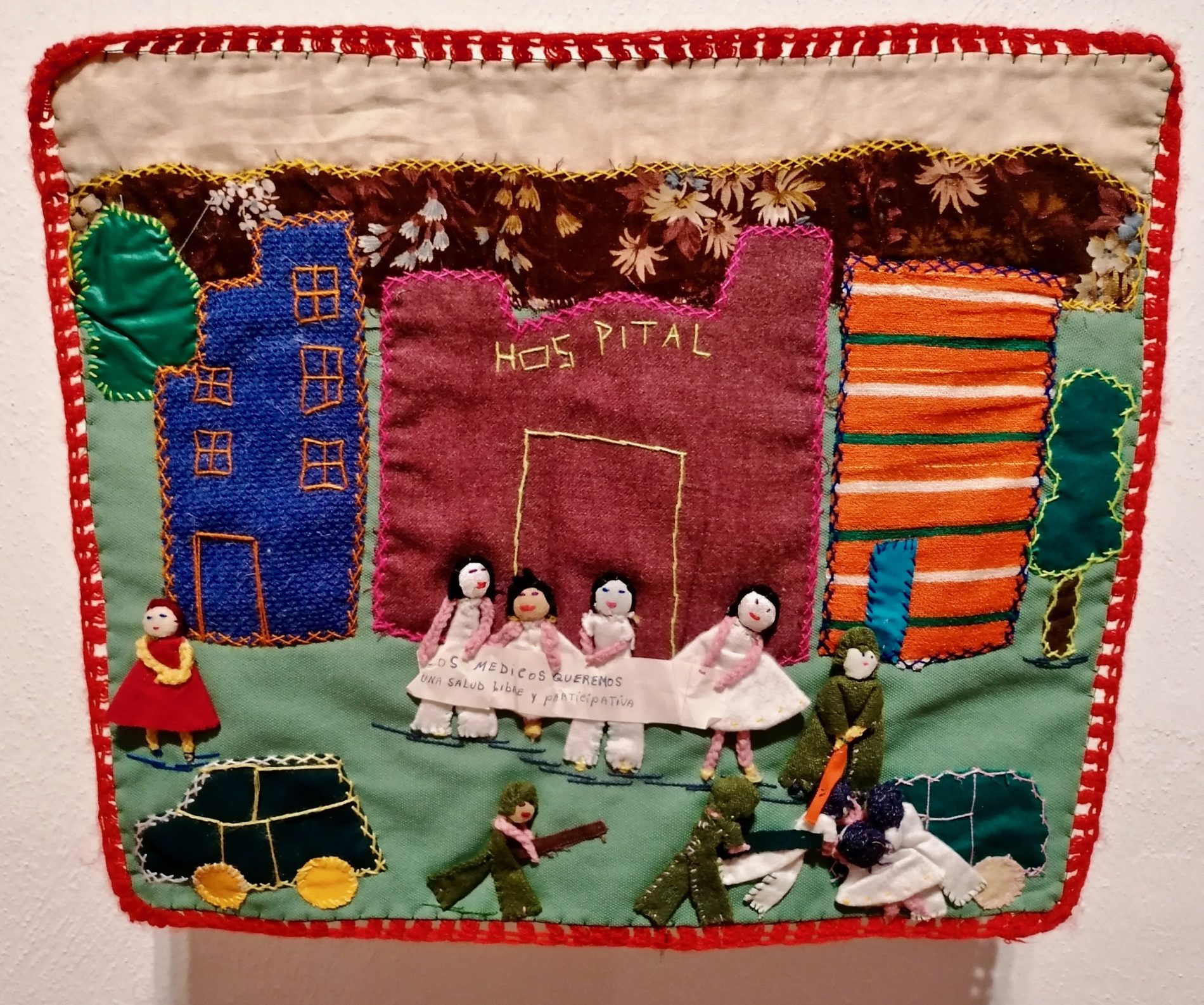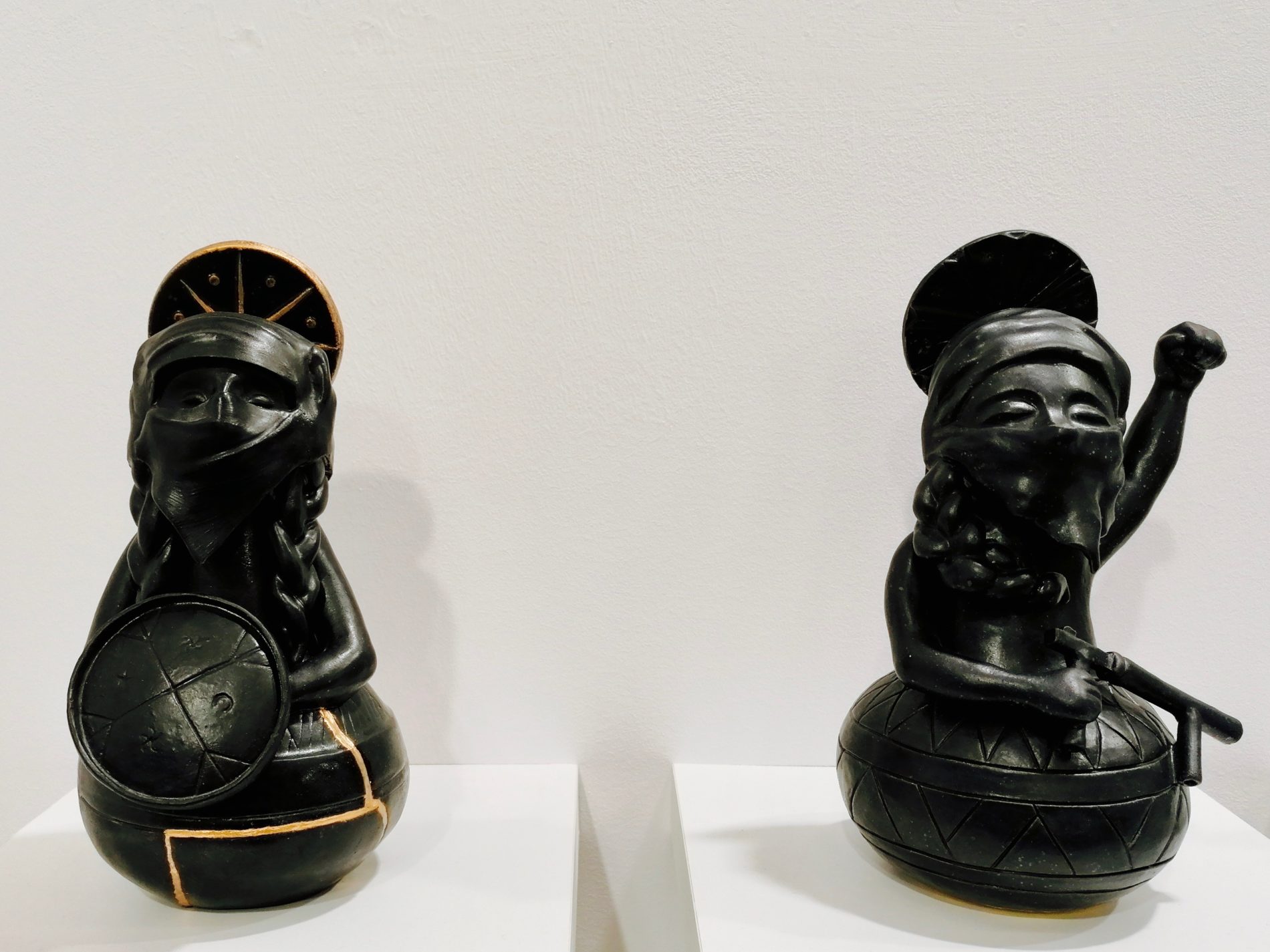MAGAZINE
Weaving Women
There is something extremely special about the female response to the tumultuous political scene in Chile that has developed not only into a system of mutual aid but also into a diversified production of beautiful and politically charged art.
The wide Latin American textile heritage and the tradition of the “mujeres tejedoras” (weaving women) is a great example of a female collective effort and long-living tradition that has survived centuries, adapting and reinventing itself and its function, nowadays influencing recent contemporary art productions.
In Chile, especially during the years of Pinochet’s military regime, the weaving tradition acquired a function of political resistance. The women of the “desaparecidos” gave birth to the famous “Arpilleras”, colourful embroidered patchworks, sewn during the long hours they spent waiting together for information about their missing relatives. Meeting repeatedly under these circumstances they turned these unfortunate encounters into regular meetings, workshops, and a way to denounce the violation of human rights. Weaving collectively became the occasion to clandestinely exchange knowledge and information during the years of dictatorship. Their creations were then sent around the world and sold, finally becoming a medium of subsistence and a way to spread abroad the happenings of a violent regime that killed many in oblivion. These colourful tapestries today are precious objects of collective memory that enclose within decorated squares of cloth the depictions of a cruel historical moment and the personal stories, sensibilities and struggles of these women.
Reflecting on the concept of mutual aid as defined in Dean Spade’s book “Mutual Aid – Building Solidarity through this crisis (and the next)” (Verso, 2020), the Arpilleras phenomenon represents a simple yet authentic example of the radical change needed in aid systems, as advocated by the author. Mutual Aid is defined by Spade as “the collective coordination to meet each other’s needs, usually from an awareness that the systems that we have in place are not going to meet them”. The spontaneous form of aggregation of Chilean women is precisely this kind of collective response to injustice, an active network based on solidarity that should serve as a model today and in the future. Advocating participatory projects within the arts and in society in general, is key to opposing the increasing tendency of atomization that “undermines our ability to organize together to change unjust conditions on a large scale”.
Traditionally, weavers hung their individual looms to a tree forming circles, a shape that notably encourages proximity and conversations. Weaving has united women for centuries, who while sitting together felt the necessity to share personal experiences and discussions.
Paula Baeza Pailamilla is a Chilean-Mapuche artist who, based on these principles, started a contemporary collective of weavers, connecting young women through an ancient activity that becomes the base of a mutual support system fostering dialogue and equality. In her work “Kuru Mapu” (Black Land), 2018, Pailamilla documents her experience with a group of women of Mapuche heritage who gather to weave an imaginary map in black yarn (the colour symbolizing purity and fertility within the Mapuche culture), bringing attention to the invisibility of the displaced Mapuche people. Once again the importance of the action of weaving lies in the interactions that take place among the participants and in the power of the spontaneous collective response to a social and personal struggle. Just like the women of the Arpilleras, Paula Baeza Pailamilla’s project weaves connections among women who were left lonely and felt invisible in front of the state and often in society. Women found their source of support and sustainment in other women experiencing the same struggle. The “Kuru Mapu” project is dedicated to Macarena Valdés, an environmental activist murdered in 2016 while protesting against the construction of a hydroelectric power plant on Mapuche lands.
The colour black is also present within the Chilean female collective protests. Between the end of 2019 and the start of 2020, the Chilean-born hymn of feminist protest “El violador eres tu” spread to the world, propelling a revolutionary wave against patriarchy. The images of fierce women protesting in the streets of Santiago and other Chilean cities wearing black bandanas on their eyes were brought to international attention.
The work of contemporary artist Francisca Rojas Pohlhammer intelligently merges Chilean traditional culture with the recent history of political feminist protest. In her latest project “Santisima Dignidad” she reproduces the traditional statues of the “Guitarreras de Quinchamalí”, a handicraft from the south of Chile representing women with pumpkin-shaped bodies that are playing the guitar. Breaking the stereotypical representation of females as strictly related to household activities, the “guitarreras” (guitar players) are musicians. The artist takes this traditional yet unconventional iconography and plays with it by directly referencing Chilean women during the recent protest, fighting for democracy and for their rights. Her vigorous and round “guitarreras” women are made of Quinchamalí black clay. They hold weapons, wear helmets and headbands to cover their faces. Referencing, and at the same time critiquing the Western conception of Art History that establishes painting as the voted and most valued medium of expression of art, Pohlhammer paints portraits of her statues with the texture of hand broided cross-stitching as a reference to the Chilean tradition of weavers. This direct citation, that within a work of contemporary art can’t help but make us question the distinction, persistently made among craftsmanship and art.
Finally, it is a thoughtful homage to a feminine non-Western history of art that nods to the recognition of a variety of histories of art, whilst provocatively elevating traditional Chilean craftsmanship to be viewed and considered as “artform”.
Introducing traditions such as those of Latin American weavers within contemporary art inspires the creation of works of art that function by questioning the status quo, stimulating a more democratic and alternative approach to patriarchal capitalism.
The metaphorical act of weaving must happen internally as well as externally, creating bonds and meaningful interactions with the reality that surrounds us. Especially within the arts, weaving creates a network of mutual support and the power of its collective action is probably the direction to follow to redeem artists and cultural workers from their enduring condition of constant struggle and vulnerability.
Tips to explore further the Chilean art scene and history of art from a feminist perspective:
- “Re-escribir la Historia” (Re-writing history) – all-female history of art from Chilean author Alegría Z (@reescribirlahistoria)
- “El Gocerío”– Victoria Guzmán blog about arts and culture in Chile: what’s happening in museums, galleries, books, theatres and the streets (@el_gocerio)
- “The great women artists” – podcasts and stories by art historian and curator Katy Hessel (@thegreatwomenartists)


